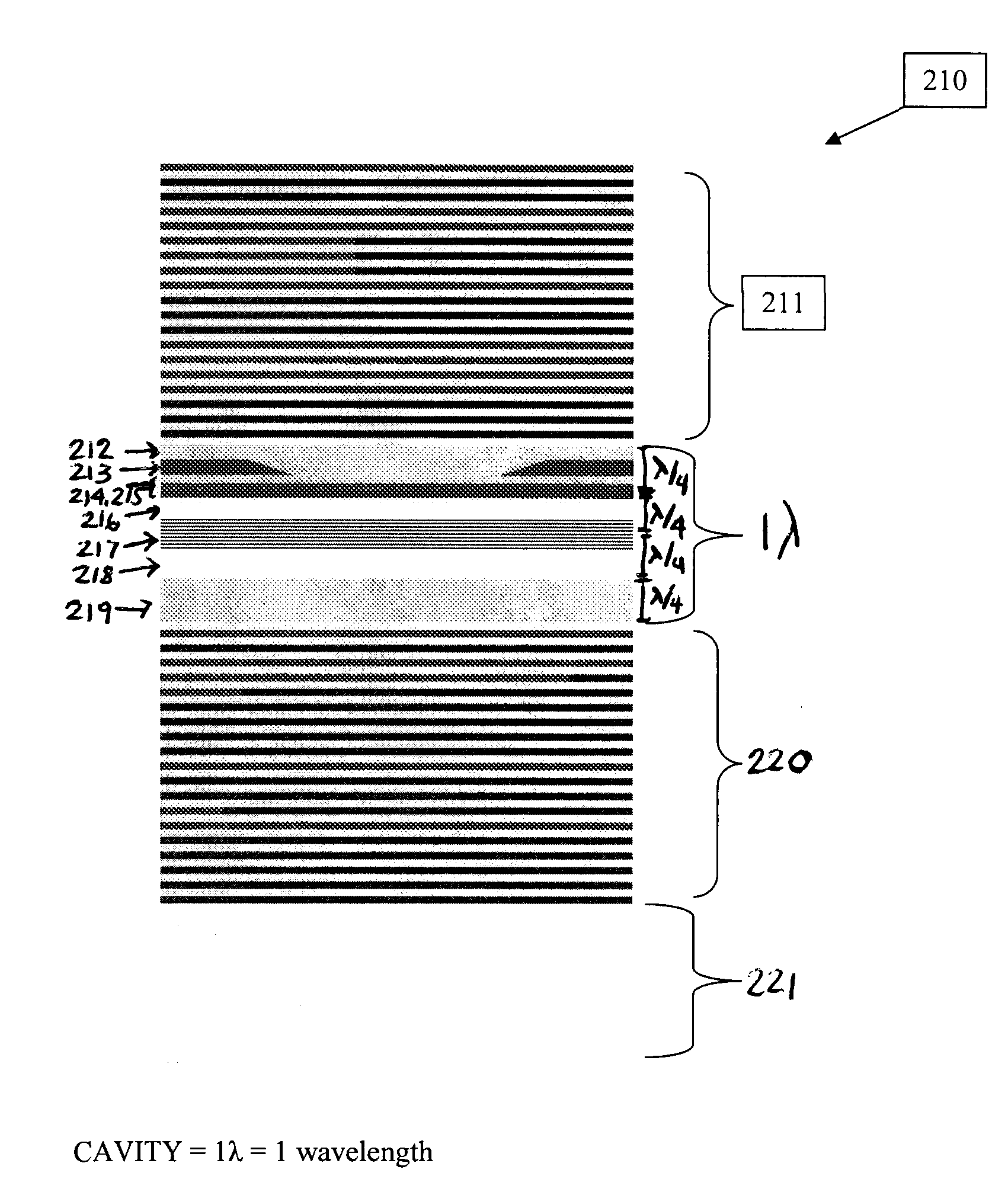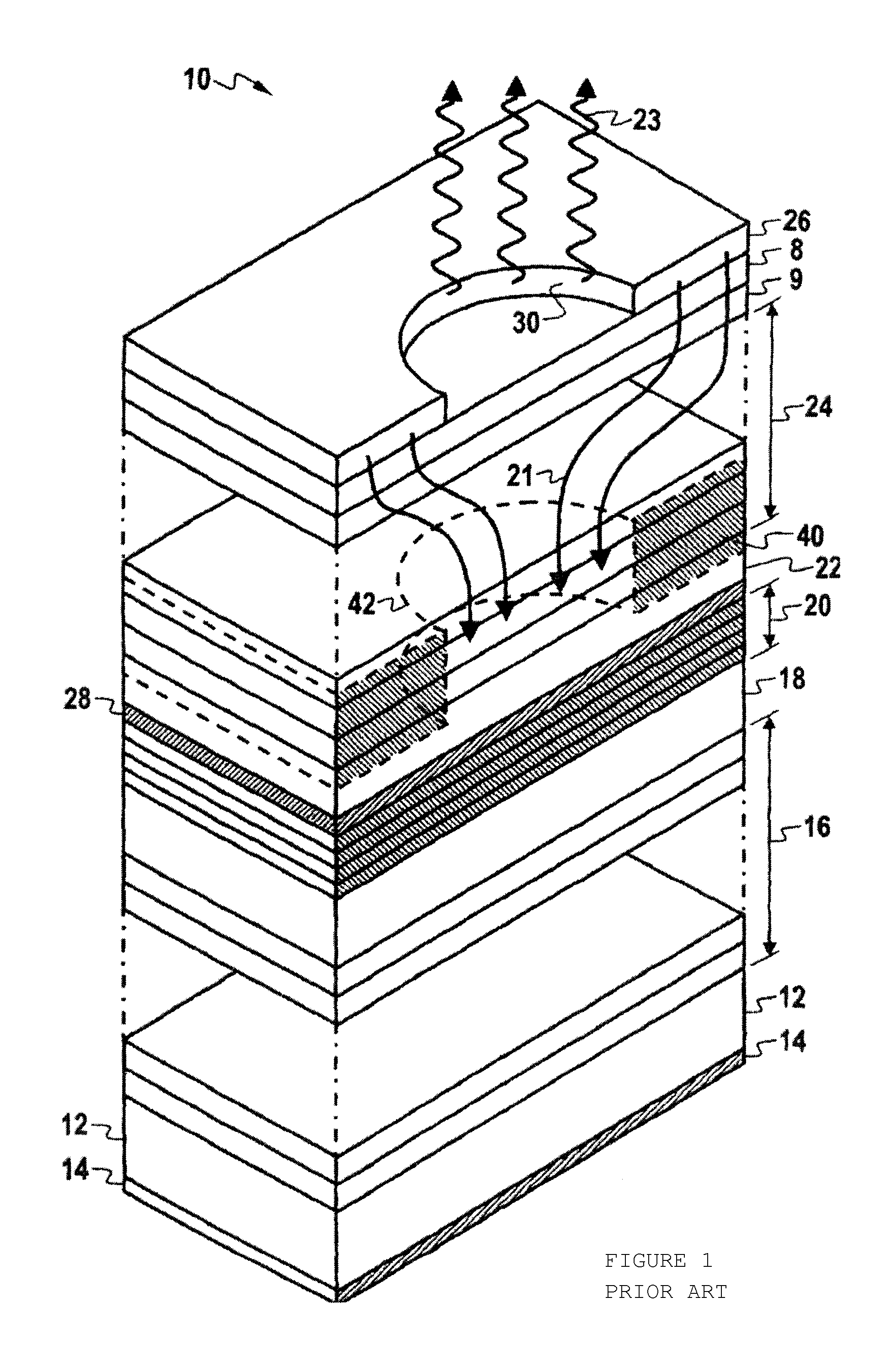VCSEL for high speed lower power optical link
a technology of optical link and vcsel, which is applied in the direction of semiconductor lasers, lasers, electrical equipment, etc., can solve the problems of long-wavelength vcsels that require newer materials, optical loss, and vcsels similar to those illustrated in fig. 1 that have problems, etc., and achieves reduced power, large optical modulation amplitude, and reduced power
- Summary
- Abstract
- Description
- Claims
- Application Information
AI Technical Summary
Benefits of technology
Problems solved by technology
Method used
Image
Examples
Embodiment Construction
[0014]An exemplary embodiment of a VCSEL, also called coherent light generators, for low power high speed optical interconnect emitting at the wavelength of around 980 nm is shown in FIG. 2. This embodiment is for illustration purposes only. The present invention is not limited this embodiment as those skilled in the art will recognize the layers may be modified from those shown with departing from the spirit of the invention. Further, the wavelength is not limited to 980 nm, and can be applied to 850 nm or even longer wavelength over 1000 nm. The present invention may be modified to operate at any wavelength including UV, visible and IR. The following discussion is made in reference to FIG. 2.
[0015]Top (DBR1) 211 and bottom (DBR2) 220 are preferably comprised of alternating Al0.85Ga0.15As and GaAs layers. Their reflectivity is R1 and R2, respectively. One-lambda (wavelength, i.e. 980 nm in this case) thick optical cavity is located between the 211 and 220. Lambda / 4 thick upper and ...
PUM
 Login to View More
Login to View More Abstract
Description
Claims
Application Information
 Login to View More
Login to View More - R&D
- Intellectual Property
- Life Sciences
- Materials
- Tech Scout
- Unparalleled Data Quality
- Higher Quality Content
- 60% Fewer Hallucinations
Browse by: Latest US Patents, China's latest patents, Technical Efficacy Thesaurus, Application Domain, Technology Topic, Popular Technical Reports.
© 2025 PatSnap. All rights reserved.Legal|Privacy policy|Modern Slavery Act Transparency Statement|Sitemap|About US| Contact US: help@patsnap.com



